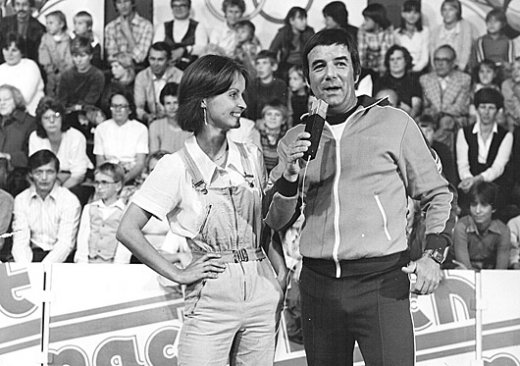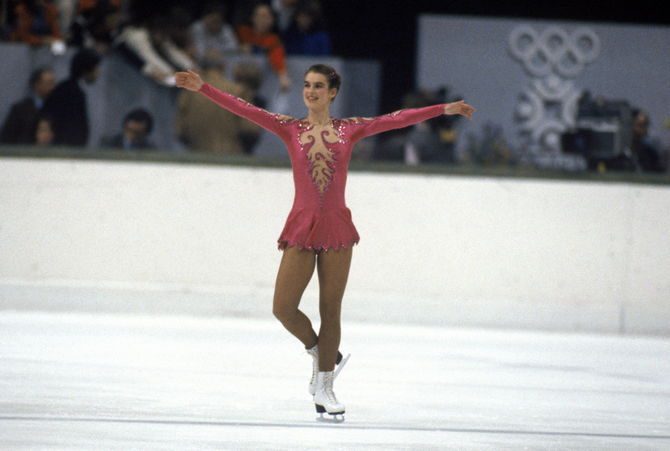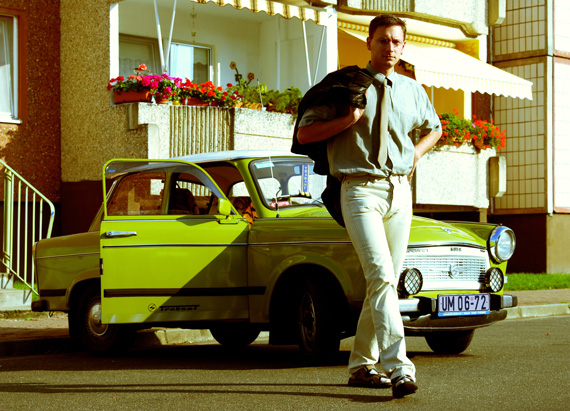How did the Germans live in the GDR
Despite the fact that more than a quarter of a century has passed since the fall of the Berlin Wall, German sociologists still note such a phenomenon as “ostalgia”.
In Germany, products with the brand "made in the GDR" are still in demand.
You can buy them in online stores. Silke Rüdiger, the owner of one of them, said that the best selling products are Red Riding Hood champagne, mustard from Bautzen, ClubCola (analogue of Coca-Cola), cucumbers from the Spreewald.
Also in Germany there are museums of the GDR and even hotels where the GDR domestic atmosphere is recreated. These places are still popular among both tourists and Germans. A sociologist from the Free University of Berlin, Professor Klaus Schroeder, believes that "ostalgia" is not a political, but rather an emotional phenomenon, but notes that 40% of German youth whose parents grew up in the GDR do not consider it a dictatorship, and 50% are sure that democracy in West Germany was not real.
Blue ties
Being always ready is a quality that any pioneer can boast of. The Telman pioneers from the GDR were the best friends of the Soviet pioneers. German children came to the all-Union camp "Artek" and wore blue ties. They were called "blue ties", which was technically not quite right.
At one time, the "older age group" of the East German Pioneers (from grade 7) wore red ties.
By the way, still in Cuba, the junior Moncadist pioneers (up to grade 5) wear blue ties, and the Joche Marti pioneers (from grades 5 to 9) wear red ones.
The chants, mood and spirit of the pioneers of our countries were almost identical, only ties, blue, unusual, haunted the Soviet pioneers. Buying a blue tie was considered chic. There was talk that the GDR ties were of even better quality than the Soviet ones.
Chingachgook and Adi

In the GDR, at the DEFA film studio, a cult movie for the Soviet era was shot. This, of course, is about the "Indian cycle". After the film "Sons of the Big Dipper" (1966), the films "Chingachgook - the Big Snake" and "Trace of the Falcon" are released with a frequency of a year.
The last film in the series, Chief White Feather, was filmed in 1983. By the way, it was filmed in the steppes of Mongolia.
East German Westerns gave rise to a real cult of the Indians in the USSR. The children, armed with bows, recklessly played scenes from GDR westerns. They inspired not only Soviet children to exploits. Films that had a great box office success in Europe decided to sell in the US, but Hollywood reacted to the creation of GDR filmmakers with coolness, calling them "ersatz Westerns." However, a copy of the film "Sons of the Big Dipper" was presented to the leader of the Siyu Dakota tribe. In 1973, mass uprisings began on Indian reservations, which went down in history as the Indian Revolution at Wounded Knee. Then the American intelligence services recognized the film as a provocation by the Stasi.
One of the favorite programs of Soviet viewers was also the sports show "Do with us, do as we do, do better than us!", which set people up for a healthy lifestyle. It was hosted by the charismatic presenter Adi.
Trabant and motorcycles
Oddly enough, they went to the GDR to buy Soviet cars. "Volga" here could be purchased for a much more reasonable price than in the Union.
The most famous car of the GDR was the Trabant, a small car that was produced as a "people's car".
It did not receive wide distribution abroad, however, Coward and Experienced in the Comedy of Bygone Days drive just the Trabant.
The skeleton of the Trabant was ordinary, made of steel stampings, but the hinged decorative panels were made of the so-called "duroplast" - a material based on phenol-formaldehyde resin (phenolic resin) filled with waste (tows) of cotton production, which was done to save steel sheet , which was in short supply in those years. The car was called a motorcycle with a common helmet, but it nevertheless gained people's love.
In addition to cars and buses, motorcycles and scooters of such brands as Simson, MZ, IWL, EMW were also produced in the GDR. For Soviet bikers, these were the cherished brands.
Sport

Sports in the GDR were on the rise. During the years of the republic's existence, East German athletes have won 409 Olympic medals at the Summer Olympics and 110 medals at the Winter Olympics. Most medals were won in athletics, swimming and rowing competitions.
The main sports star of the GDR was the figure skater Katharina Witt. Her popularity was unprecedented. Witt was loved on both sides of the Berlin Wall, her performances were followed in the USSR.
For the Soviet people, Katarina Witt was the embodiment of the free life that a woman of a socialist state can live. The figure skater was the “calling card” of the GDR, she had to constantly be photographed with Erich Honecker, the special services were vigilantly watching her, but she definitely did not feel herself a “victim of the regime”. However, in 1988, when the "bonds" began to loosen, Katarina signed a contract with the American ice ballet Holiday on Ice.
In 1998, Witt posed for Playboy. The circulation was literally swept away. This has only happened once in the history of a men's magazine, when Marilyn Monroe was on the cover.
Range
In everyday terms, life in the GDR was an "improved version" of life in the Soviet Union. Despite the fact that today it is customary to write about how bad life was in the GDR compared to the FRG, life in the GDR was stable, and the range of products and consumer goods was wide. Of course, things from the GDR were massively transported to the USSR.
These were Dederon stockings, jeans, Beatles records, fashionable moccasins, Rula watches, cameras, film, as well as goods from the Intershop chain of stores, where you could buy things from capitalist countries for stamps. The whole thing was packed in "GrossGermany" suitcases, which were called "the death of a porter" for their dimensions.
Defectors

Let us not, however, idealize life in the GDR. Even before the construction of the Berlin Wall, before 1961, more than three million East Germans had fled to West Germany.
The first person to be shot while trying to cross the Berlin Wall from east to west was Günter Litfin, a member of the Christian Democratic Union, banned in the GDR.
He was shot on August 24, 1961. In total, 136 people were killed while trying to cross the wall.
Even the guards of the wall fled to the West. In two years, until locks were installed on the gates that only a few people could open, 1,300 GDR soldiers crossed the border.
In total, during the existence of the GDR, approximately 5,000 people fled to the West.



